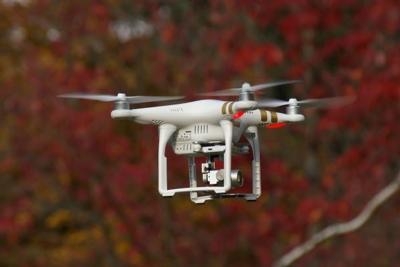Mon, Nov 06, 2017
Jonathan Rupprecht Says Patchwork Of Regulations Is 'Dangerous' For The Industry
The Department of Transportation on Thursday announced the start of the Trump Administration's Drone Integration Pilot Program that will allow state, local, and tribal governments to partner with private sector entities, such as UAS operators or manufacturers, to accelerate safe UAS integration. Entities that wish to participate in the program form teams and submit proposals to the FAA to fly more advanced UAS operations, such as beyond visual line-of-sight or over people.

The Program is expected to provide immediate opportunities for new and expanded commercial UAS operations, foster a meaningful dialogue on the balance between local and national interests related to UAS integration, and provide actionable information to the Department of Transportation (DOT) on expanded and universal integration of UAS into the National Airspace System (NAS).
Noted drone attorney Jonathan Rupprecht says that the program opens a dangerous Pandora's box by inviting the state, local, and tribal governments to propose reasonable restrictions on drones.
Rupprecht says that the danger is that currently, drone pilots have a statutorily granted federal right to fly in navigable airspace and only the FEDERAL government has exclusive control of national airspace. See 49 USC 40103. Furthermore, federal courts have held that aviation is a field-preempted area and have previously struck down as unconstitutional non-federal laws regulating aircraft. He cites U.S. Supreme Court City of Burbank v. Lockheed Terminal, and Singer v. City of Newton cases.
"While I applaud President Trump's plan to integrate drones, unfortunately, it invites restrictions from non-federal governments to be placed on drones," Rupprecht said in an email to Aero-News. "Federal law places the regulations of airspace exclusively in the Federal Government's authority and the same section of the federal law gives U.S. citizens a public right of transit through the navigable airspace. This pilot program creates a dangerous precedent and emboldens other non-federal governments to create drone laws which typically result in hurting businesses that want to follow the law. Currently, aviation typically has to comply with only the federal law for operations. If states, counties, and local governments are allowed to get involved, you have a potential for death by a thousand regulatory papercuts."
(Source: Rupprecht email. Image from file)
More News
He Attempted To Restart The Engine Three Times. On The Third Restart Attempt, He Noticed That Flames Were Coming Out From The Right Wing Near The Fuel Cap Analysis: The pilot repor>[...]
Make Sure You NEVER Miss A New Story From Aero-News Network Do you ever feel like you never see posts from a certain person or page on Facebook or Instagram? Here’s how you c>[...]
From 2009 (YouTube Edition): Leading Air Show Performers Give Their Best Advice for Newcomers On December 6th through December 9th, the Paris Las Vegas Hotel hosted over 1,500 air >[...]
Aero Linx: NASA ASRS ASRS captures confidential reports, analyzes the resulting aviation safety data, and disseminates vital information to the aviation community. The ASRS is an i>[...]
“For our inaugural Pylon Racing Seminar in Roswell, we were thrilled to certify 60 pilots across our six closed-course pylon race classes. Not only did this year’s PRS >[...]
 NTSB Final Report: Rutan Long-EZ
NTSB Final Report: Rutan Long-EZ ANN FAQ: Turn On Post Notifications
ANN FAQ: Turn On Post Notifications Classic Aero-TV: ICAS Perspectives - Advice for New Air Show Performers
Classic Aero-TV: ICAS Perspectives - Advice for New Air Show Performers ANN's Daily Aero-Linx (06.28.25)
ANN's Daily Aero-Linx (06.28.25) Aero-News: Quote of the Day (06.28.25)
Aero-News: Quote of the Day (06.28.25)



